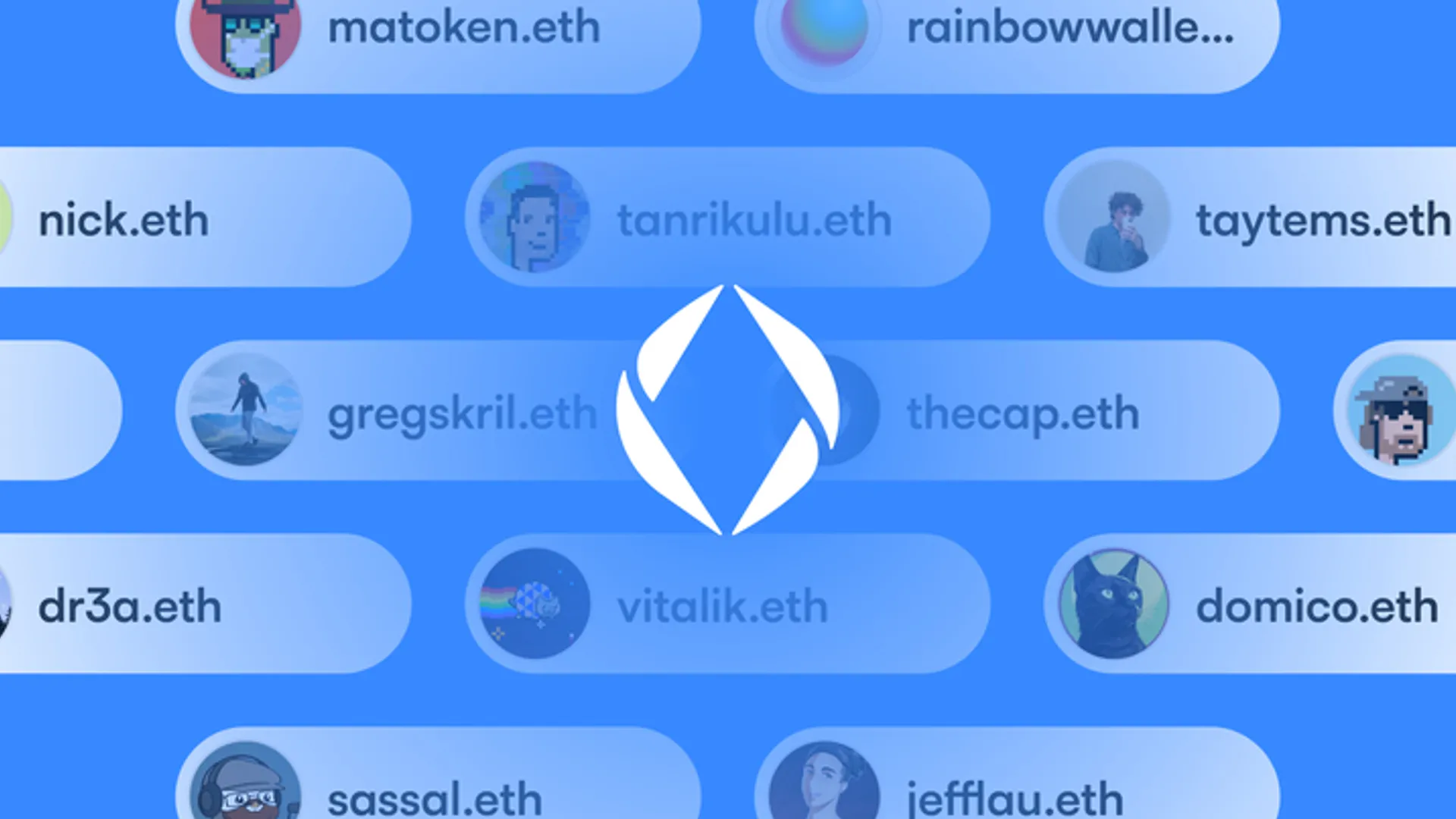
Introduction
While thinking through our team's latest launches (

While I can't quickly teach you about CCIP-Read, state proofs, and gateways in this article, I can share the history of Ethereum, ENS (Ethereum Name Service), the ethos and the collective decision-making that led to these announcements. After reading this, you should walk away with a new understanding of why ENS was created, what its goals are and where it's headed.
Ethereum's Early Days
Ethereum started with, frankly, an absurd dream: a Turing-complete, censorship-resistant and permissionless world computer that could redefine trust in the digital age. Vitalik Buterin and a global community of early contributors imagined a platform that could do more than just send money around. They wanted to change how we trust and interact with the digital world. This vision is what led to "smart contracts", programmable scripts that can execute autonomously on the blockchain. Today, you can find decentralized applications across nearly every industry!
Despite the rapid growth and potential of Ethereum applications, a significant challenge emerged: how does one make this complex system, with its intricate codes and processes, accessible to everyone? While many brilliant minds were captivated by the raw infrastructure of Ethereum, including scalability, security, network consensus, and programming languages, there weren't enough developers focused on enhancing its usability for a broader audience.
Enter Nick Johnson: From Google to the Ethereum Foundation
ENS's story begins with Nick Johnson, the founder and lead developer of ENS. Johnson, a software engineer at Google, was approached by a recruiter from a well-known financial firm with an opportunity to work on Ethereum. Intrigued by Ethereum, he was so impressed that he decided to pursue it in his own unique way. Johnson started his Ethereum journey by contributing code, including smart contracts, Solidity (Ethereum's native programming language) libraries, and more. His efforts caught the attention of the Ethereum Foundation, a non-profit organization that's dedicated to supporting Ethereum and other related technologies.
After joining the Ethereum Foundation as a core contributor, Johnson worked on Swarm, a project dedicated to decentralized data storage. At that time, Swarm aimed to create a decentralized content store but faced challenges in making stored content in a human-readable format. This challenge inspired Johnson to develop a naming system. This naming system was the groundwork for what would eventually evolve into ENS (Ethereum Name Service). As the internal project expanded in impact, scope, and complexity, the Ethereum Foundation awarded Johnson a grant to spin ENS off from the Ethereum Foundation and into an independent organization.
ENS: Blockchain Beyond Currency
So, what exactly is ENS? Unlike Bitcoin with its 21 million hard-coded coins or Ethereum's generalized smart contract platform, instead ENS seeks to serve as the DNS for the Web3 space. DNS is the system that allows you to go into your browser and type in the address "www.google.com" and for the computers working diligently in the background to know that what you really meant was the IP address "142.250.191.46". DNS acts as a translation layer between humans and machines to improve our experience on the web. This is precisely the role ENS plays in Web3: it acts as a translation layer, providing users with simple, memorable names like "nick.eth" instead of typing out lengthy hexadecimal address such as "0xb8c2C29ee19D8307cb7255e1Cd9CbDE883A267d5."
What stands out about ENS is how it leverages the power of Ethereum to add nearly limitless additional use cases to your username. These are among the most common use case we observe today; however as the web continues to evolve, we anticipate rapid changes and expansions to this list:
- Human-Readable Names: As discussed above, ENS transforms complex Ethereum addresses into memorable names, thereby allowing users to securely send and receive cryptocurrencies.
- Decentralized Websites: You can set up your ENS to serve decentralized content, ensuring a censorship-resistant presence on the web. Check out Vitalik's ENS-powered blog here - vitalik.eth.limo
- Subdomains & Identity: By using subdomains (example.nick.eth) you can easily organize accounts and seamlessly manage your digital identity across the web.
- Bridging Web2 and Web3: ENS allows you to crypto-enable your DNS assets, allowing for "nick.com" to represent an Ethereum account exactly like "nick.eth".
ENS Governance: A Community-Driven Future
ENS isn't run by a private company; instead the governance of ENS is orchestrated through a transparent and inclusive process operated by the ENS DAO (Decentralized Autonomous Organization) and $ENS token holders. Token holders can propose changes, from technical upgrades to policy shifts, which are then put to a DAO vote. This mechanism ensures that ENS evolves in alignment with its user's needs and collective vision, bolstering its resilience and adaptability. Through forums, discussions, and collaborative decision-making, the DAO fosters a sense of belonging and shared purpose among its members. Recent votes to fund eight new, independent teams for direct contribution to ENS's future have significantly brightened the outlook for the ENS DAO and its governance.
Looking Forward
From Ethereum's ambitious beginnings to ENS's establishment as a core primitive of the Web3 ecosystem, our journey reflects a shared commitment to making blockchain technology accessible for everyday users. ENS remains dedicated to a future where digital identity, ownership, and user-centric design are central to the evolution of the internet. The road ahead presents both opportunities and challenges, including enhancing the usability of the ENS platform, improving the protocol's scalability, and expanding its reach beyond the Ethereum ecosystem.
We hope you'll join us on our mission. To learn more about ENS and stay in the loop, make sure to follow us on Farcaster and 
